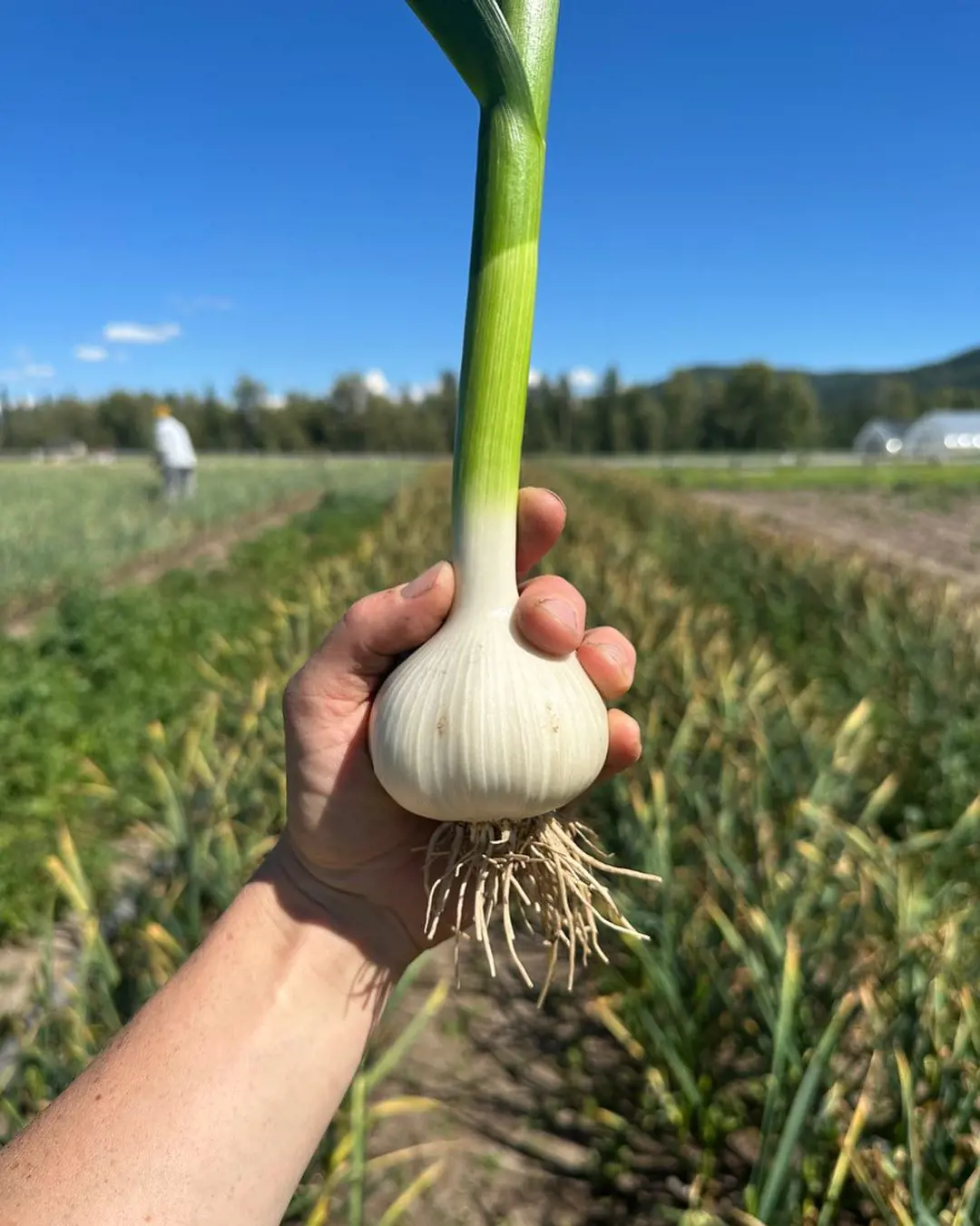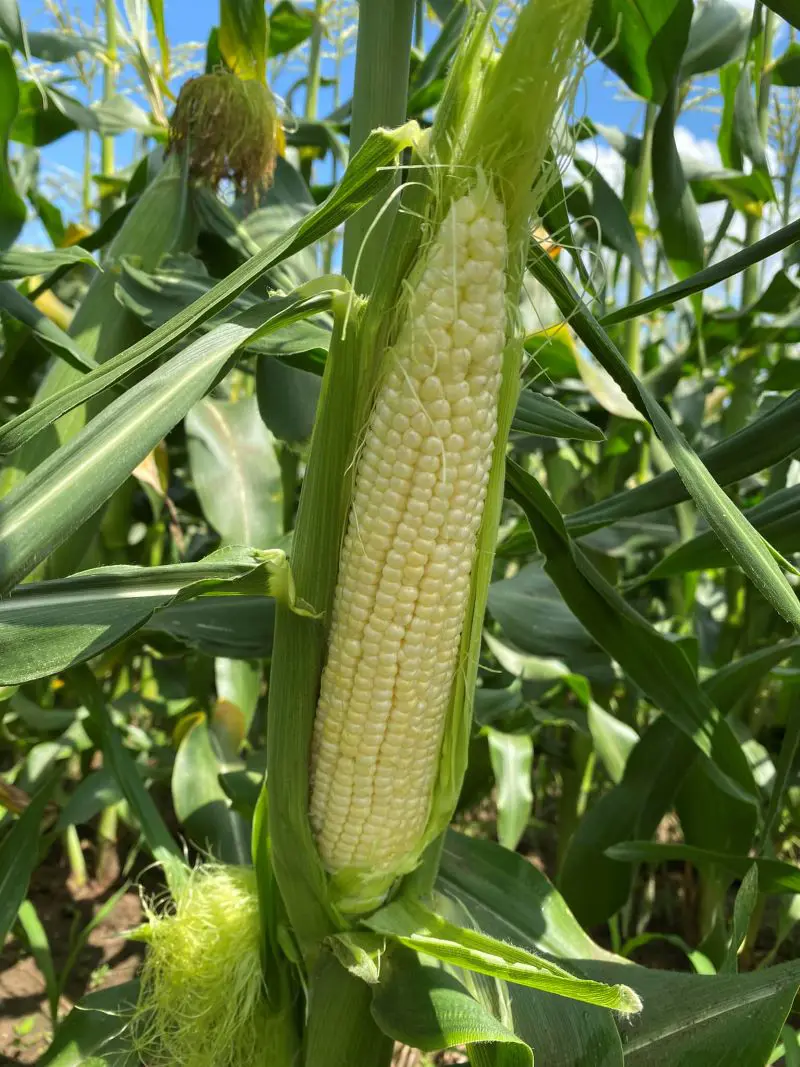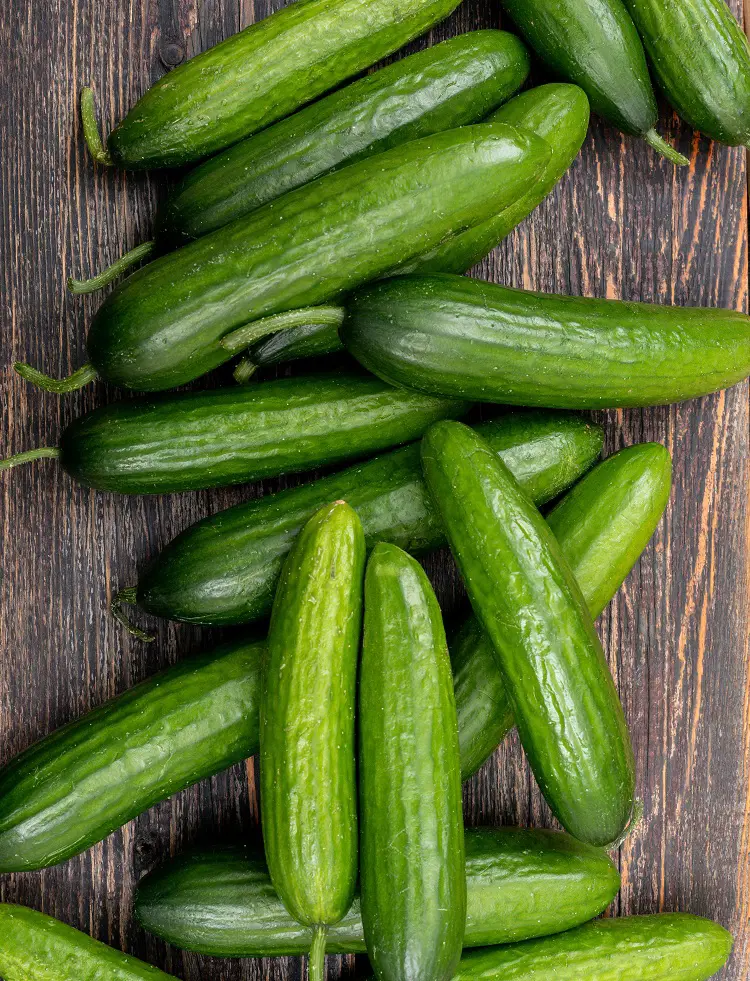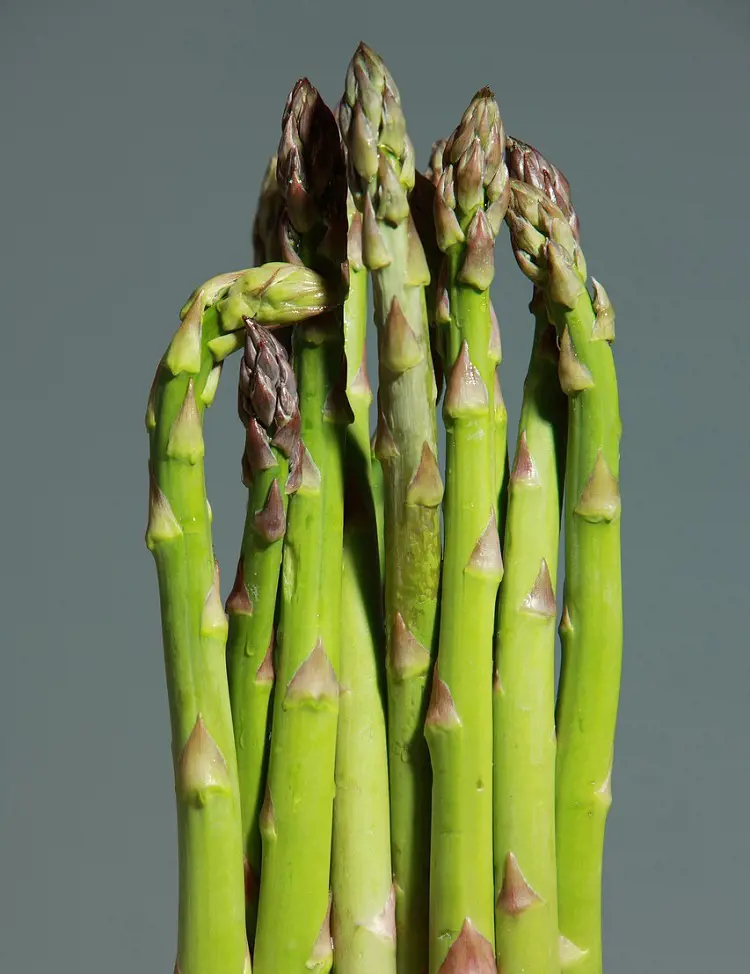How To Plant, Grow And Care Radishes In Your Garden
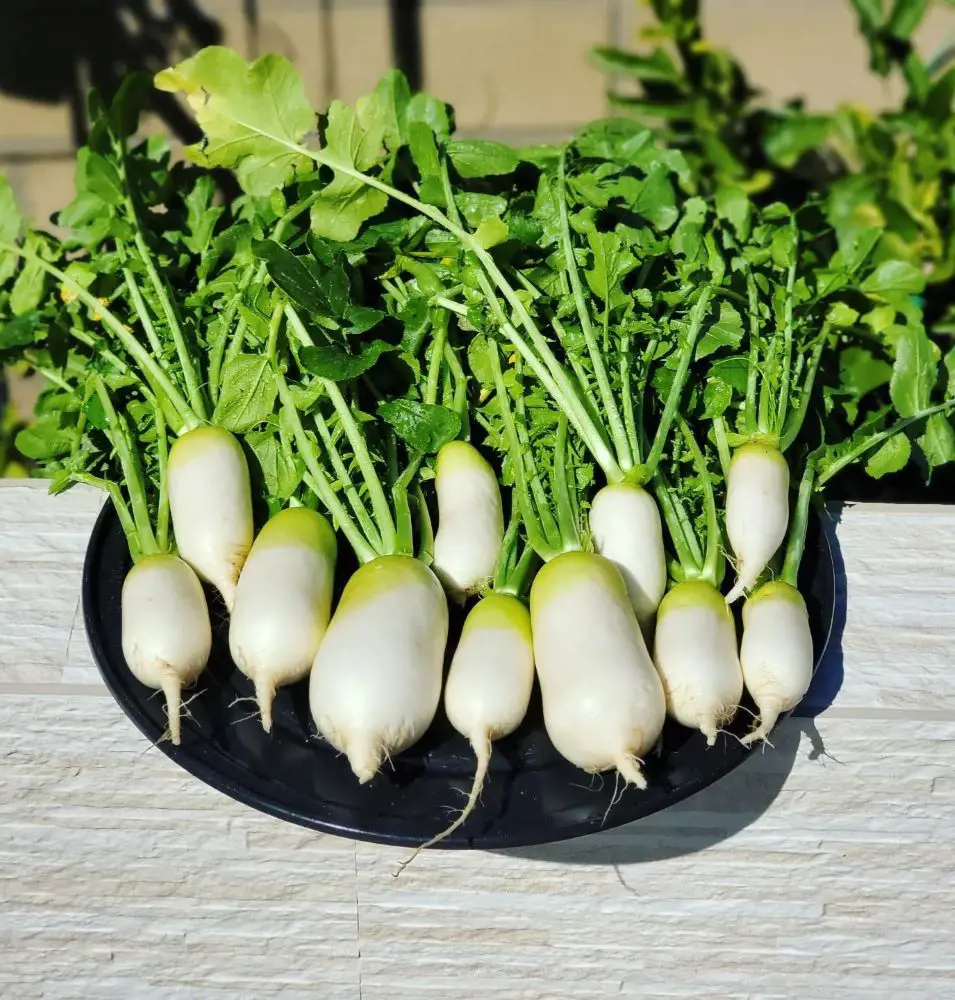
This post may contain affiliate links. If you make a purchase through links on our site, we may earn a commission.
Growing radishes in your garden is a fantastic way to enjoy crisp and peppery veggies that you've nurtured from seed to plate. It's a straightforward process that anyone can try, even if you're new to gardening.
In the following 12 steps, we'll guide you through each stage, from selecting the right spot in your garden to harvesting your radishes at just the right moment. So, let's get started on the radish-growing adventure, a fast-growing vegetable.
1. Select a Sunny Spot

Radishes thrive in full sun, which typically means they need at least 6 hours of direct sunlight daily. Sunlight is crucial for the photosynthesis process, where plants convert sunlight into energy to fuel their growth.
Adequate sunlight exposure promotes robust leaf and root growth, resulting in healthier and more flavorful radishes. Insufficient sunlight can lead to weak, spindly plants and smaller, less flavorful radishes.
2. Prepare the Soil
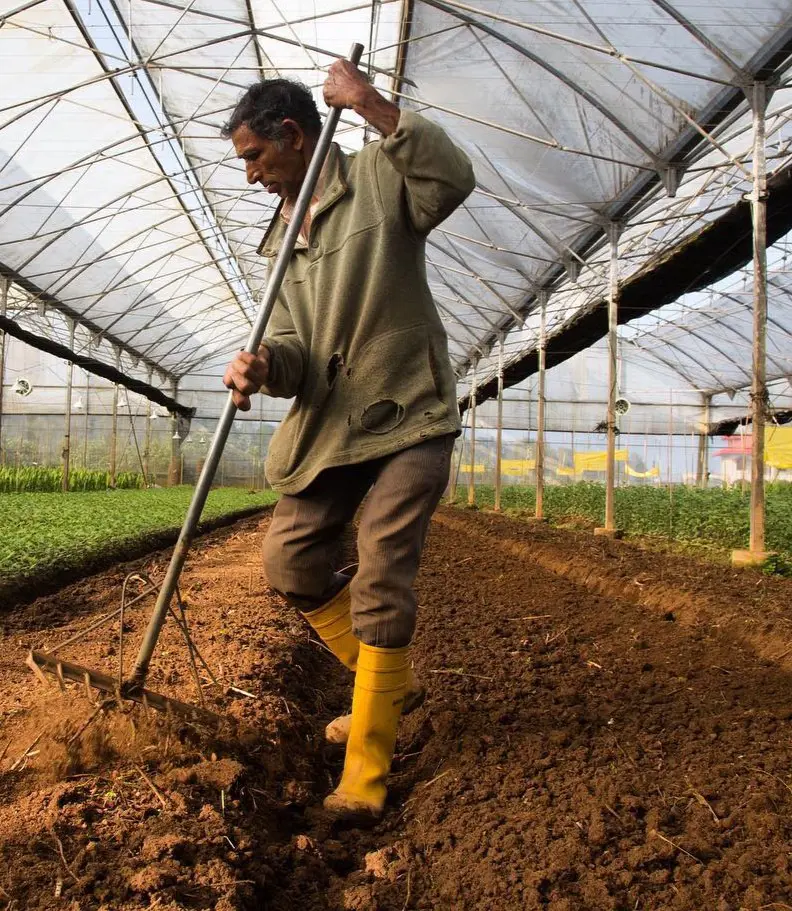
Radishes prefer well-drained soil that is rich in organic matter. Well-drained soil ensures that water doesn't pool around the radish roots, preventing issues like rot.
Organic matter, such as compost or well-rotted manure, contributes essential nutrients to the soil, promoting healthy radish growth. To prepare the soil, start by clearing the chosen area of any debris, rocks, or weeds, and once the area is clear, use a shovel or garden fork to loosen the soil to a depth of at least 6 inches.
3. Sow Radish Seeds
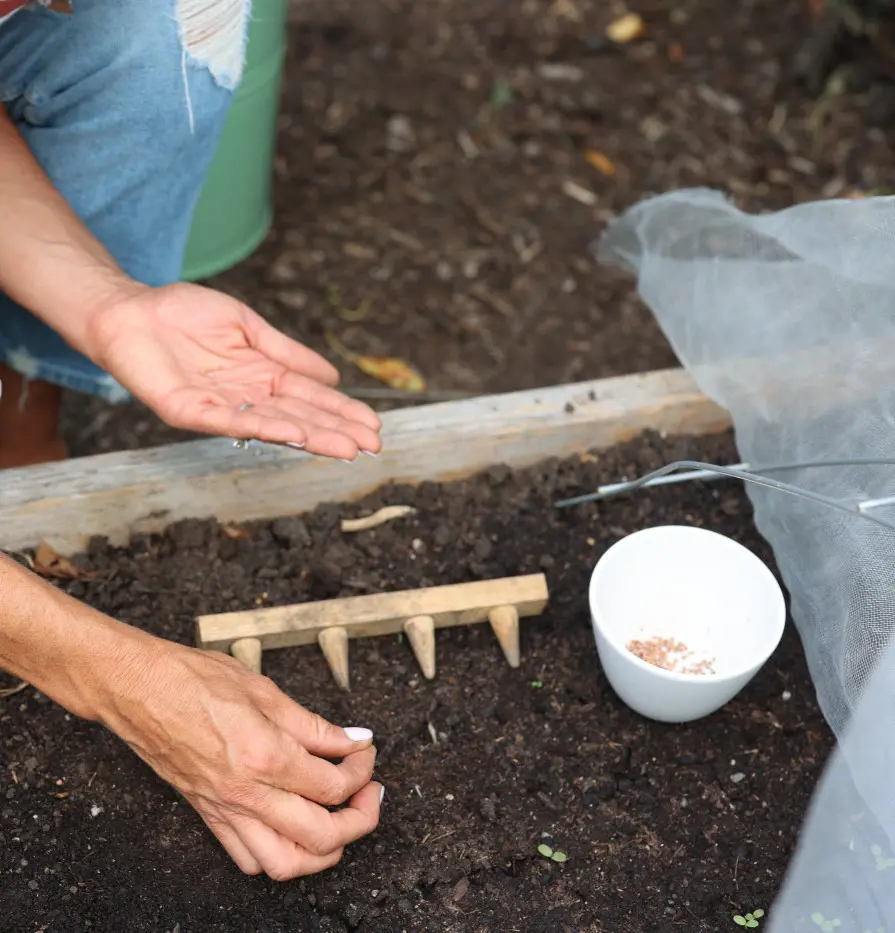
Sowing radish seeds directly in the soil allows the plants to establish their roots in their intended growing environment from the very beginning. Radishes are known for their quick growth, and direct sowing helps them develop strong roots early on.
Radishes are among the fastest-growing seeds, as they germinate within a week of sowing the seeds. Before sowing, ensure that the soil is well prepared; it should be loose, well-drained, and rich in organic matter.
4. Watering
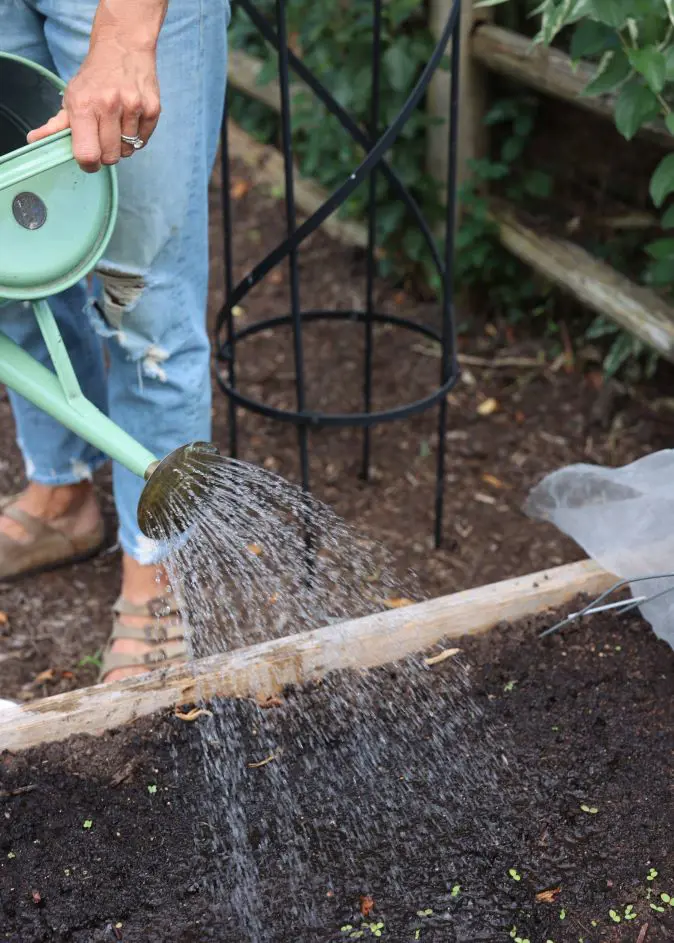
When you plant radish seeds, it's essential to keep the soil consistently moist until the seeds germinate. This initial phase is critical for the seeds to sprout and establish seedlings.
Once the seedlings emerge, you should continue to provide a steady supply of water to support their rapid growth. However, it's important not to overwater the radishes, as excessive moisture can lead to issues such as root rot.
5. Thin Seedlings
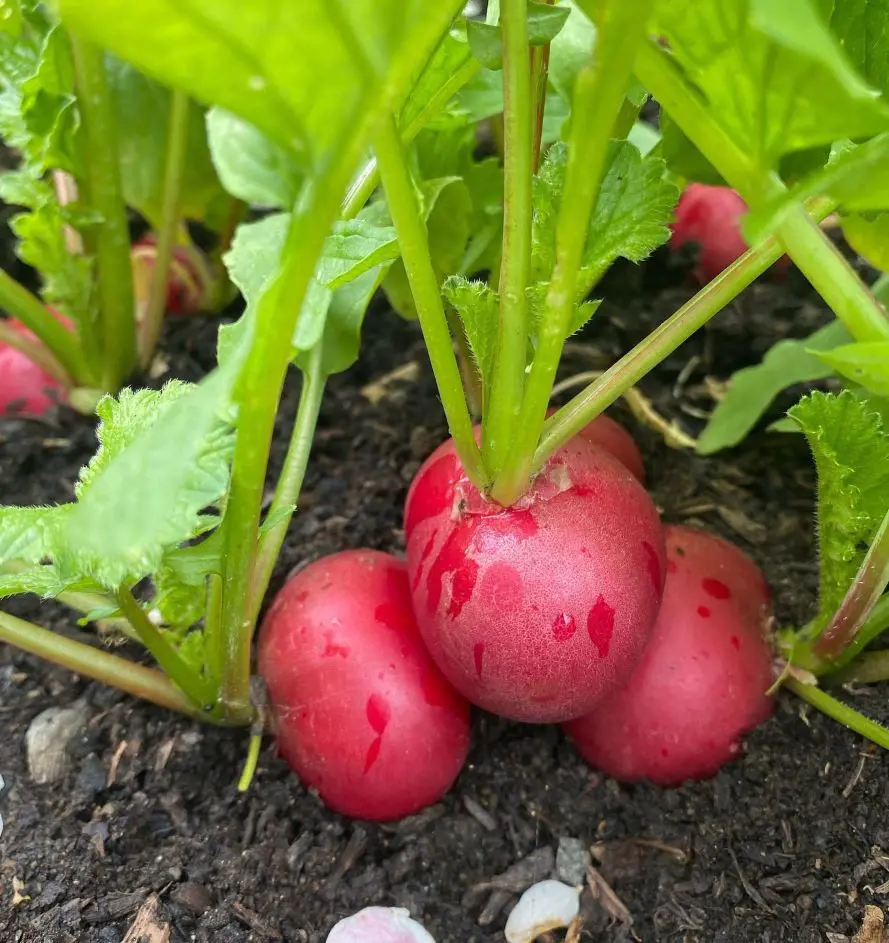
Thin seedlings are the result of selectively removing some of the radish seedlings to provide adequate spacing between the remaining plants. When radish seeds germinate and seedlings emerge, may initially appear crowded.
Thinning is crucial to ensure that each radish plant has enough room to grow and develop properly. Once the radish seedlings have emerged and are a few inches tall, carefully remove some of them, leaving the strongest and healthiest ones in place.
6. Mulch
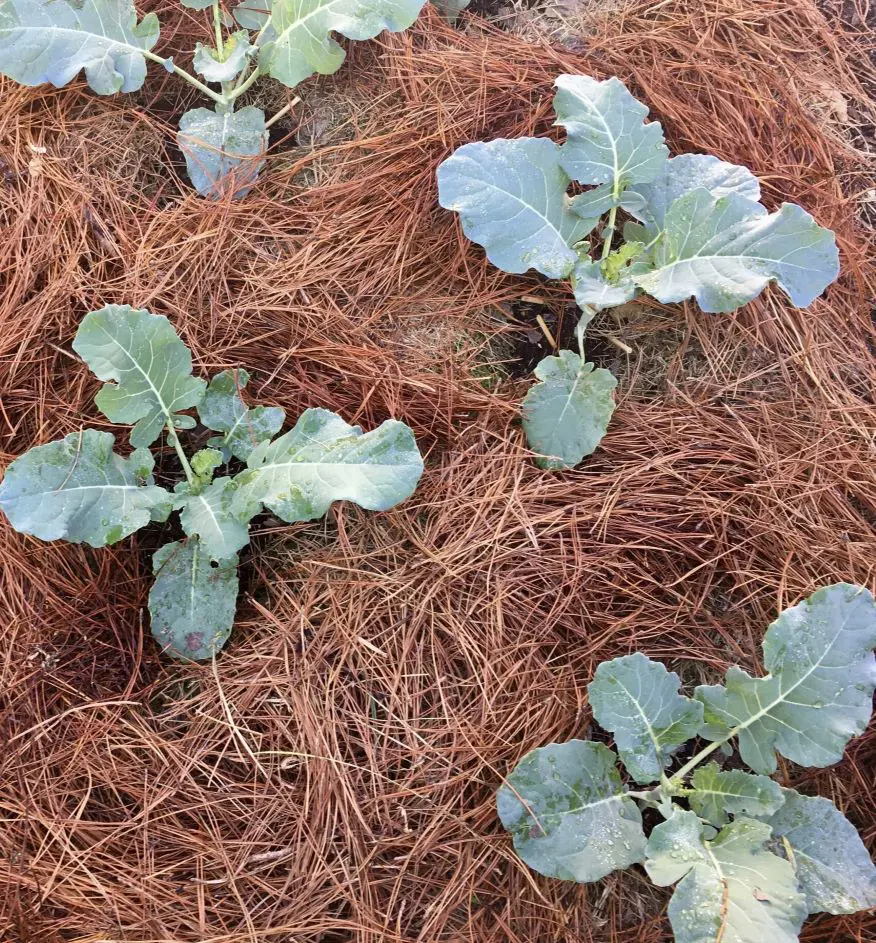
Mulching involves applying a layer of organic or inorganic material to the soil surface around the radish plants. This layer serves multiple purposes to support the healthy growth of radishes.
Although it is the easiest vegetable to grow in a pot, one should ensure that it is spread evenly around the radish plants, leaving a small gap around the base of each plant to prevent the development of fungal diseases. Common mulch materials include straw, shredded leaves, or compost.
7. Fertilize Moderately
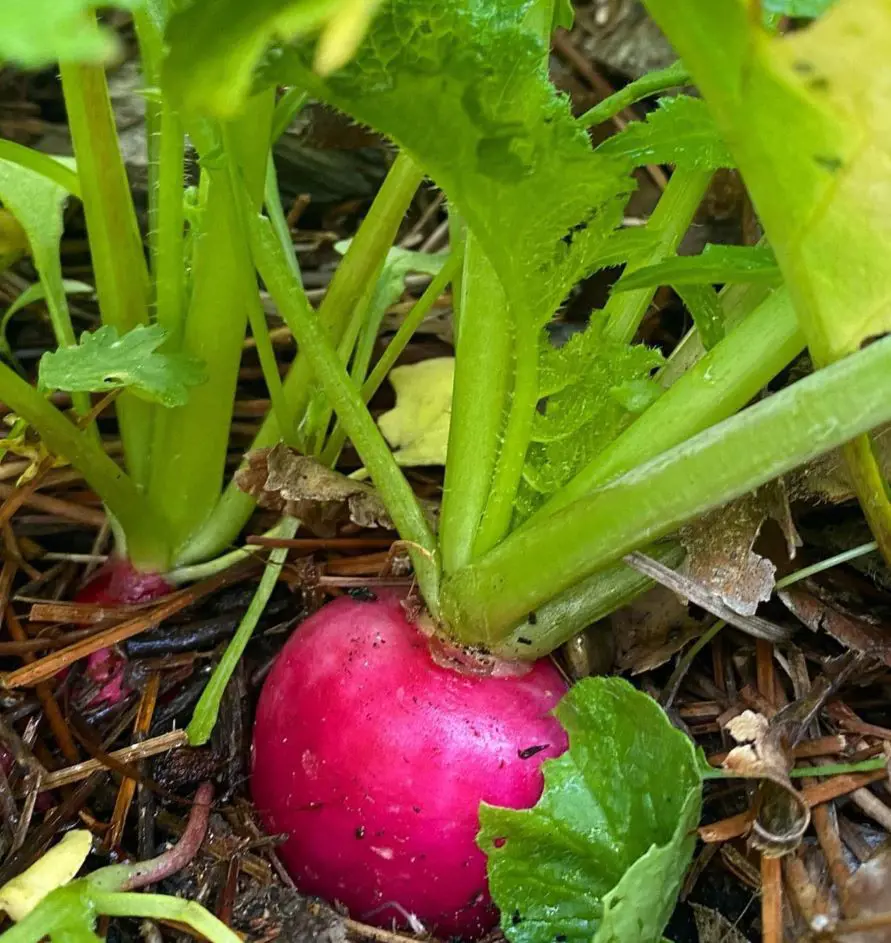
Radishes don't require excessive amounts of fertilizer, particularly nitrogen, as this can result in lush foliage at the expense of root development. Instead, a balanced fertilizer with equal or near-equal proportions of nitrogen (N), phosphorus (P), and potassium (K) is suitable.
Fertilizing moderately ensures that the radishes receive the nutrients they need for balanced growth without causing imbalances or negative effects. Typically, a general-purpose granular fertilizer with an N-P-K ratio of 10-10-10 or 5-10-10 can be used.
8. Weed Control
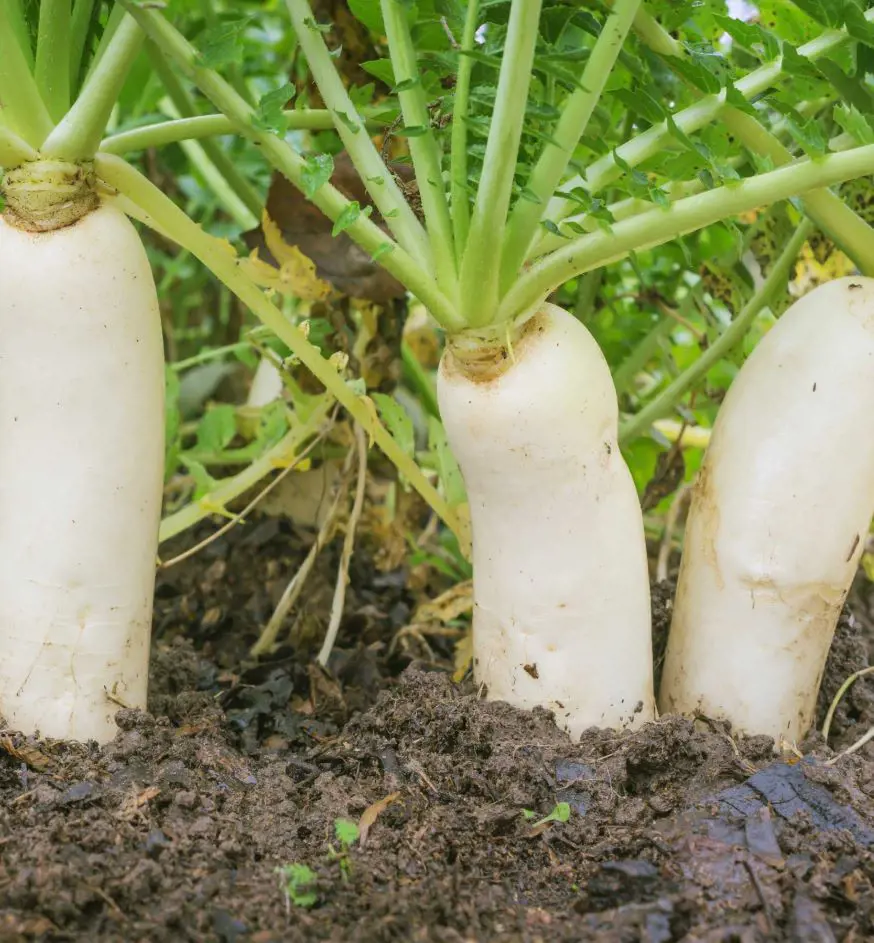
Weed control is an essential aspect of growing radishes to ensure that the plants have access to sufficient nutrients, water, and sunlight without competition from unwanted vegetation. Applying a layer of organic mulch, such as straw or shredded leaves, around the radish plants helps suppress weed growth.
Regularly inspect your radish bed and manually remove any weeds that appear. It is essential to strike a balance, as excessive disturbance of the soil can impact radish root development.
9. Provide Adequate Support
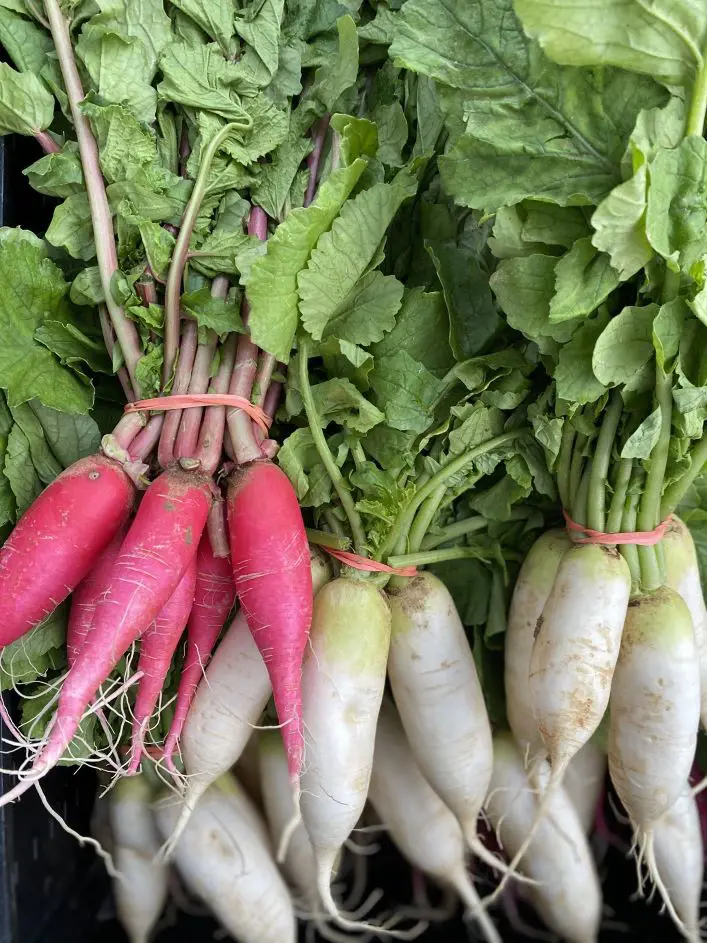
Providing adequate support for radishes primarily applies to larger varieties like Daikon radishes, which can grow quite big and sometimes struggle under their weight. Adequate support involves methods to prevent the radishes from becoming top-heavy and potentially bending or breaking.
One common method is staking, where you insert a sturdy stick or rod into the ground near the radish plant and tie the plant to the stake with a soft material like twine or gardening tape.
10. Watch for Pests
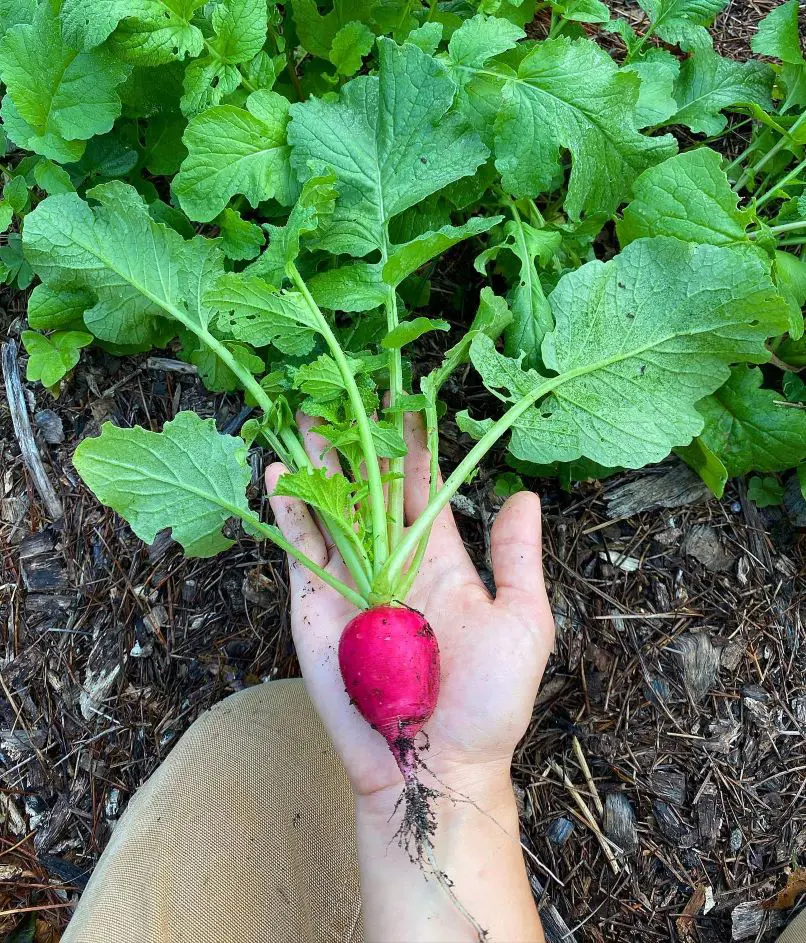
When growing radishes, it's important to keep an eye out for potential pests that can impact the health of your plants. Regularly inspecting your radish plants for signs of pest damage and taking prompt action will help you address issues before they become severe.
Additionally, practicing good garden hygiene, such as removing plant debris and rotating crops, can contribute to a healthier growing environment and reduce the risk of pest infestations.
11. Harvest at the Right Time
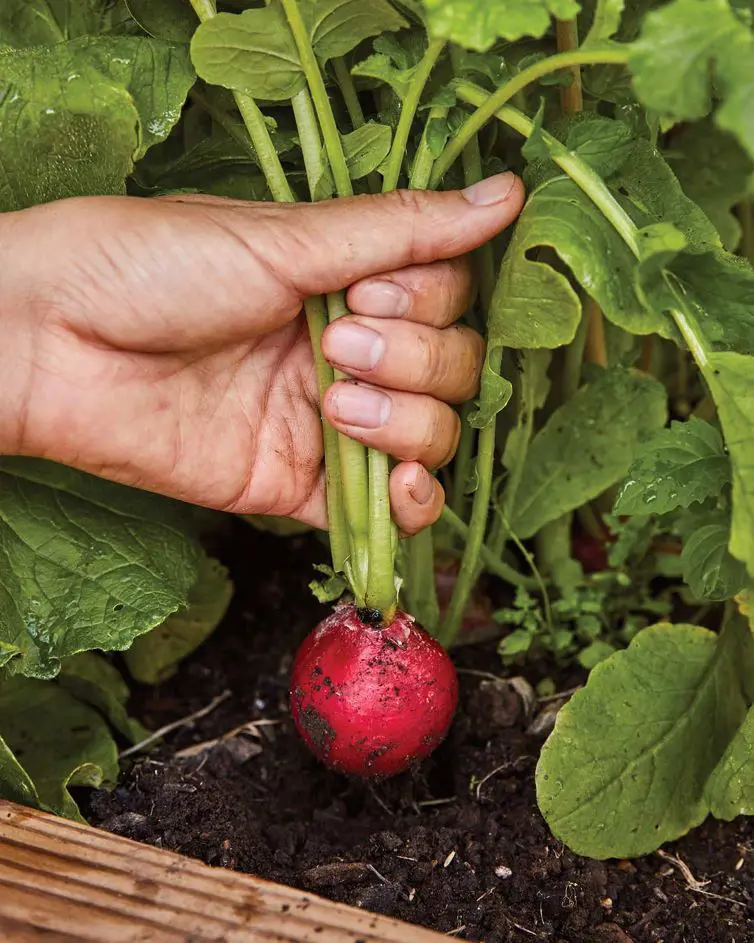
Harvesting radishes at the right time is crucial to ensuring they are crisp, flavorful, and not overly pungent. The appropriate harvesting time depends on the radish variety, but in general, most radishes are ready for harvest within 3–4 weeks after planting.
To harvest, gently loosen the soil around the radish with your hands, grab the greens near the base, and pull the radish out. Be careful not to damage neighboring radishes during this process.
12. Succession Planting
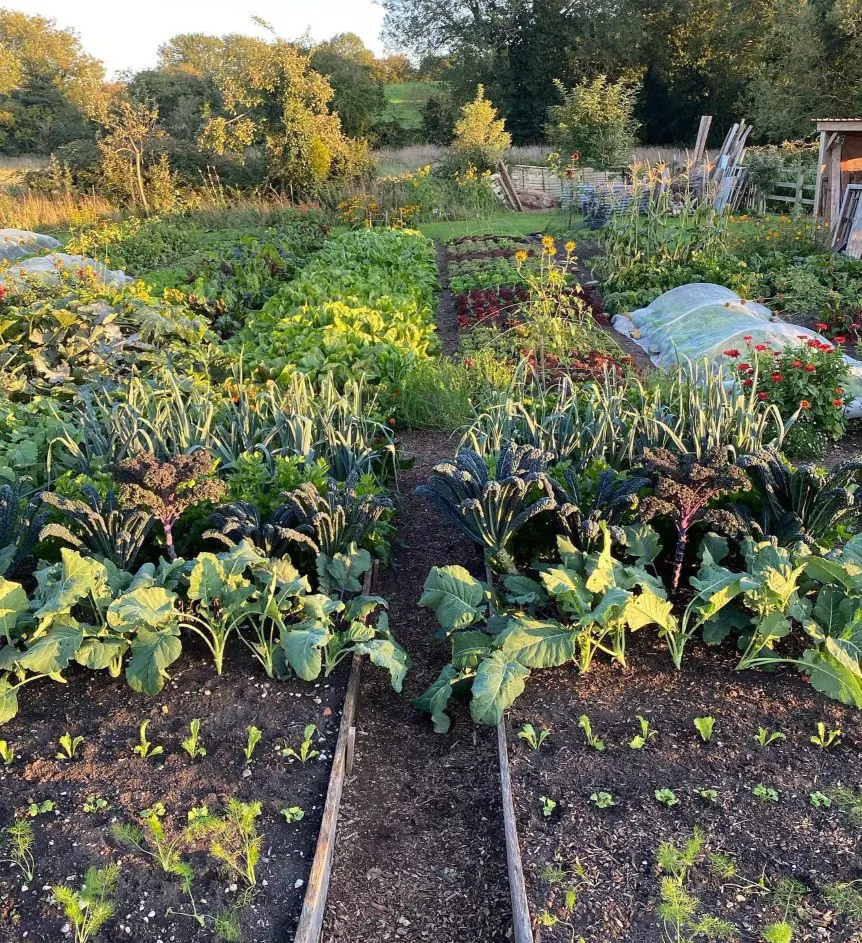
Succession planting is a strategy used in gardening where you stagger the planting of crops at regular intervals to ensure a continuous harvest throughout the growing season. Knowing when to plant vegetables helps reap maximum benefits.
In the context of radish growing, succession planting involves sowing radish seeds in multiple batches, usually every 1-2 weeks, rather than planting all the seeds at once. This approach helps you avoid a glut of radishes at one time and ensures a more consistent and extended harvest.
Recent posts
How To Grow
How To Grow
How To Grow Garlic
A bulbous member of the onion family, garlic is prized for both its potent flavor and a variety of therapeutic applications. Due to its relative ease of cultivation, it is a favorite among home gardeners and a pioneer in kitchens worldwide. Garlic ma...
How To Grow
How To Plant and Grow Orchids
Orchids are one of the prettiest and most interesting flowers out there, with over 30,000 types and 200,000 hybrids. They are one of the biggest families of plants and can grow indoors or outdoors. However, growing and taking care of orchids is not e...
How To Grow
How To Plant, Grow And Harvest Corn All By Yourself
Growing your popcorn or sweet corn at home garden can seem like an interesting idea. However, it requires a large amount of space to grow as it is a tall plant that needs plenty of room to spread out. But, if you want to enjoy freshly popped po...
How To Grow
How To Plant, Grow And Care Cucumbers
Growing cucumbers is like going on a fun journey where you get to plant and pick your very own crunchy veggies. It's not just about having tasty cucumbers, it's also about the joy of seeing your plants grow. Whether you have a big garden or a small b...
How To Grow
How to Plant, Grow And Care For Spinach?
Growing leafy greens in your backyard garden is both healthy and fun. Spinach can be the best leafy green to start with as it is relatively easy to grow from scratch and can be harvested in about a month from planting. It thrives in spring or fall in...
How To Grow
How To Plant, Grow And Care Asparagus In Your Backyard
People love asparagus in spring and summer because it's one of the first veggies to pop up, and the fresh spears taste amazing. Besides being tasty, it's super healthy, loaded with vitamin B, vitamin C, calcium, and iron. Growing asparagus might soun...
